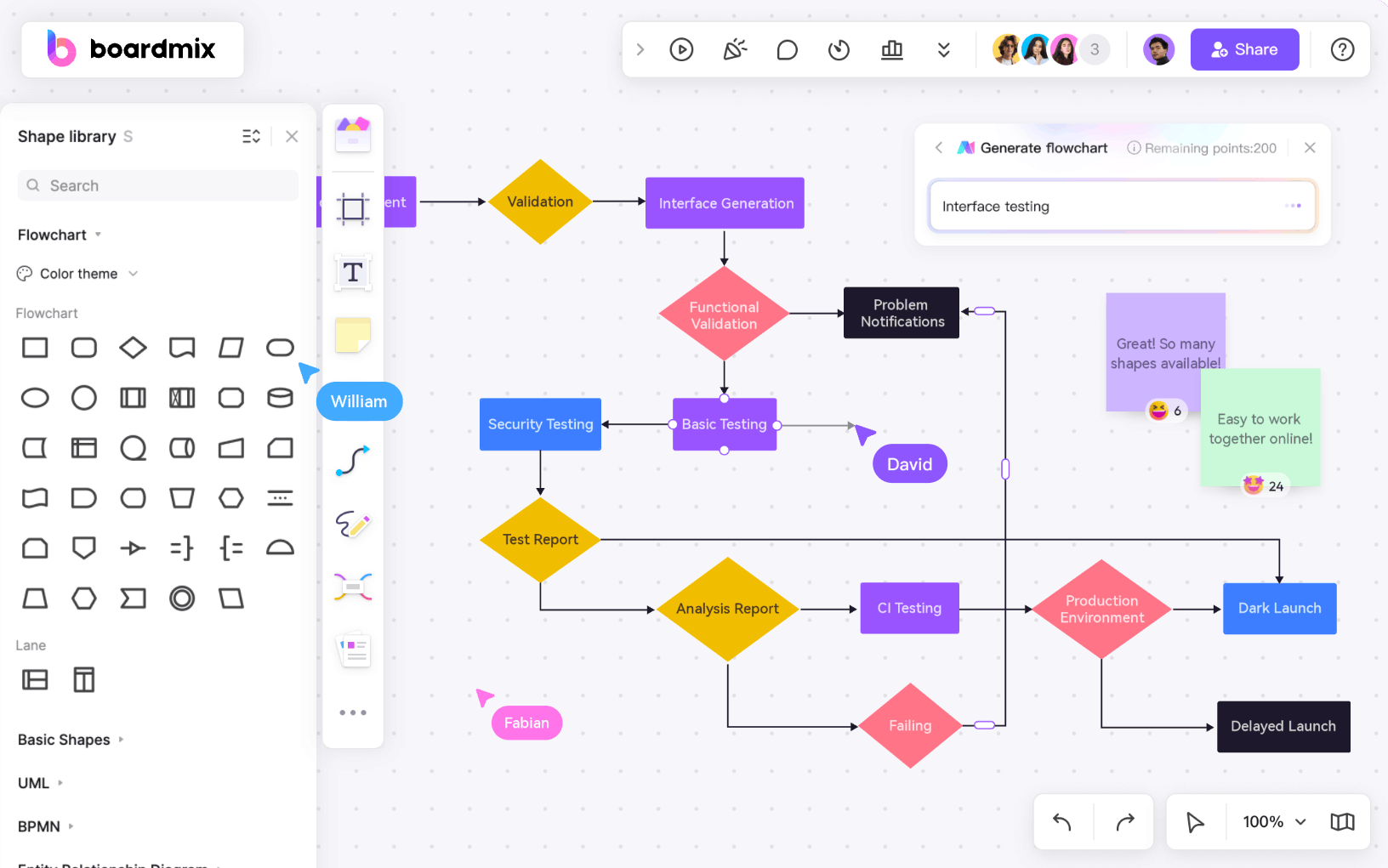Creating a Tree Topology Diagram with Boardmix can be likened to nurturing a digital tree. It's about connecting each node, like branches of a tree, in a hierarchical structure that ensures efficient and structured data transmission. Leveraging the power of Boardmix to create diagrams that are both precise and aesthetically pleasing. So, how does Boardmix facilitate the creation of these diagrams online for free? What features does it offer to enhance your network visualization process? Let's explore these questions together, delving into the realm of Tree Topology Diagrams through the innovative lens of Boardmix.
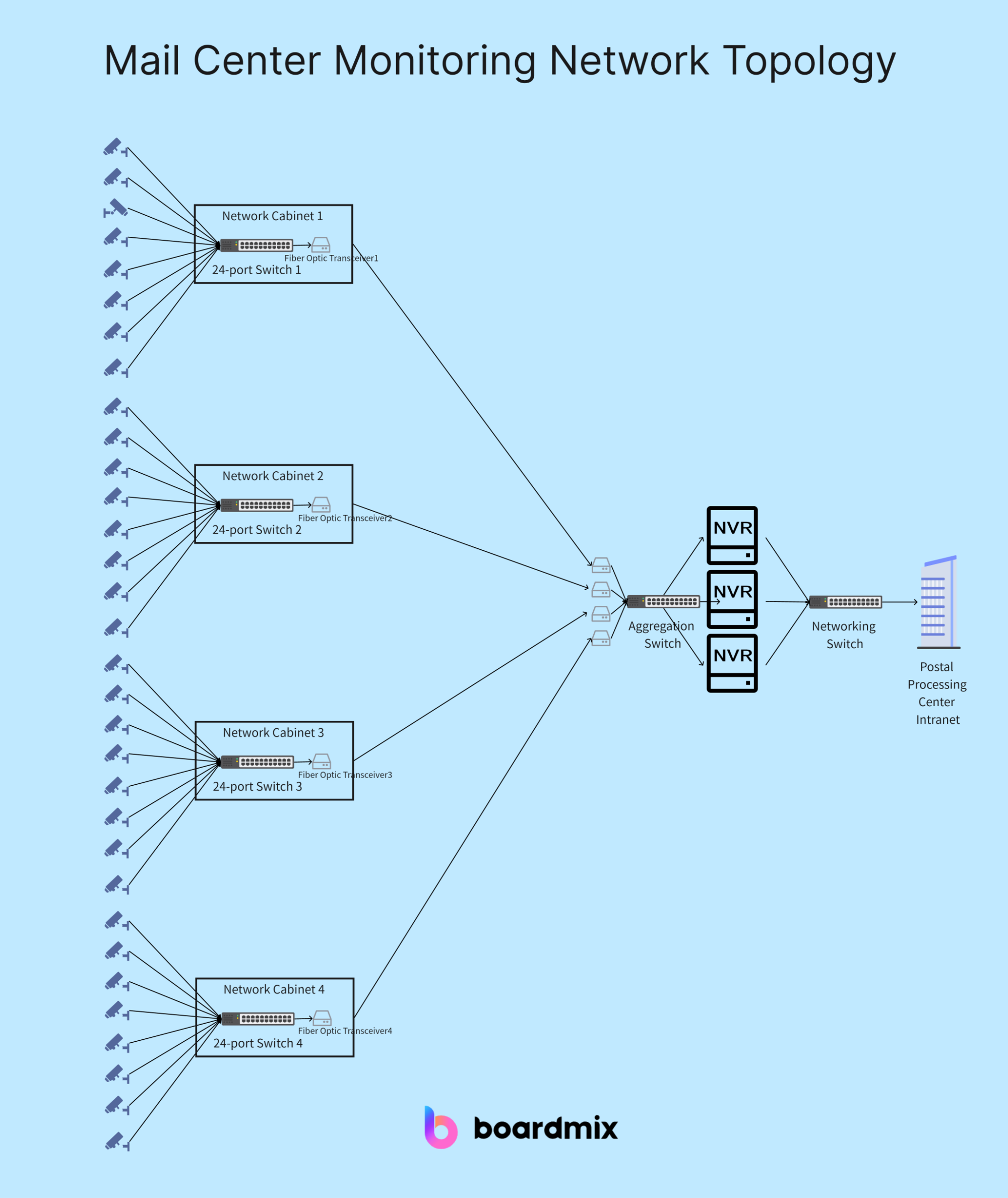
What is the Tree Topology Diagram?
A tree topology diagram is a visual representation of a network architecture that resembles a hierarchical structure with multiple levels. In this network topology diagram, devices are connected to a central node, also known as the root, which serves as the main hub for the network. From the root, branches extend outwards to connect additional nodes, forming a tree-like structure.
In a tree network topology diagram, each node is represented by a symbol or icon, and the connections between nodes are depicted using lines or arrows. The network topology diagram provides a clear visual representation of the network's structure and hierarchy, making it easier to understand and manage. The tree network topology diagram is an essential tool for visualizing and understanding the layout and connectivity of a network using a hierarchical structure.
The tree topology offers several advantages:
- Scalability: The hierarchical structure allows for easy expansion by adding branches and connecting new nodes. This makes it suitable for networks that may need to accommodate future growth or changes.
- Centralized Management: The root node serves as a central point for managing and controlling the network. This simplifies network administration tasks, such as monitoring and troubleshooting.
- Redundancy: The tree topology can provide redundancy by having multiple paths from the root node to the end nodes. If one path fails, there are alternative routes to ensure uninterrupted connectivity.
- Flexibility: The tree topology allows for different levels of connectivity within the network. Nodes can be organized into different branches or sub-trees, allowing for customization based on specific requirements.
- Cost-Effectiveness: Compared to other topologies like a mesh or ring, the tree topology generally requires fewer connections and cables, resulting in cost savings.
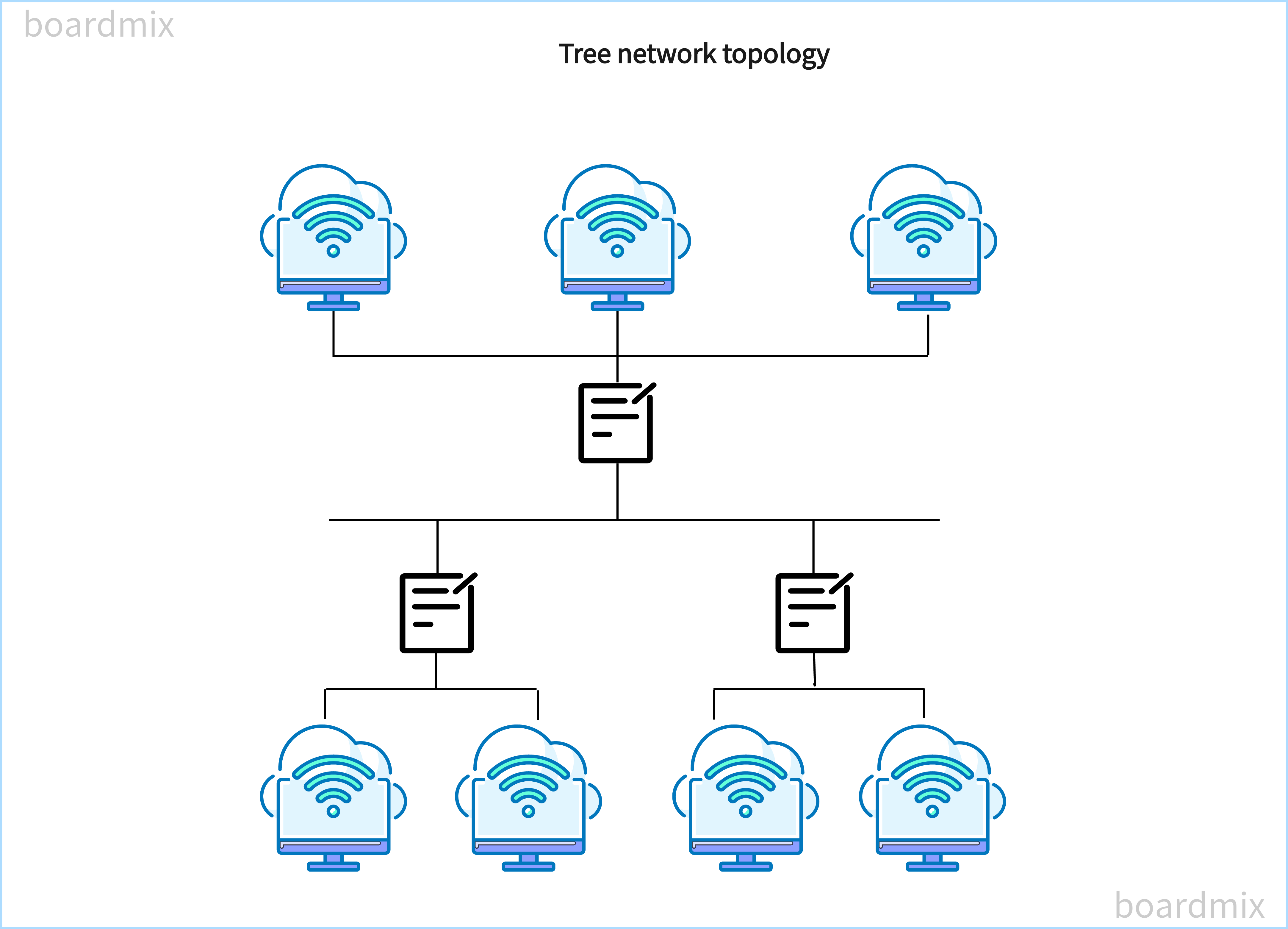
Why Use Boardmix for Creating Tree Topology Diagrams?
There are several reasons why you should consider using Boardmix for creating tree network topology diagrams:
- User-Friendly Interface: Boardmix provides a user-friendly interface that makes it easy to create and edit tree topology diagrams. Its intuitive drag-and-drop functionality allows you to quickly add and arrange devices and connections.
- Customization Options: Boardmix offers a wide range of customization options, allowing you to tailor your tree topology diagram to your specific needs. You can customize the appearance of devices, connections, and labels, making the diagram visually appealing and easy to understand.
- Collaboration Features: Boardmix allows for seamless collaboration among team members. You can invite colleagues to view and edit the diagram, making it easy to work together on network planning and troubleshooting.
- Integration with Other Tools: Boardmix integrates with other popular network management tools, such as monitoring and configuration software. This integration streamlines your workflow and enhances your overall network management capabilities.
- Accessibility: Boardmix is a cloud-based platform, which means you can access your tree topology diagrams from anywhere, at any time. This makes it convenient for remote teams or individuals who need to access and update diagrams on the go.
- Cost-Effective Solution: Compared to other diagramming tools, Boardmix offers a cost-effective solution for creating tree topology diagrams. It provides a range of pricing plans to suit different budgetary requirements, making it an affordable option for businesses of all sizes.
Boardmix offers a user-friendly interface, customization options, collaboration features, integration with other tools, accessibility, and cost-effectiveness. These benefits make it an ideal choice for creating tree topology diagrams and effectively managing your network.
How to Create Tree Topology Diagrams with Boardmix
Creating tree network topology diagrams with Boardmix is a straightforward process. Here is a step-by-step guide:
1. Sign in to your Boardmix account or create a new account if you haven't already.

2. Once you're logged in, click on the "Create New Board" button or the "+" icon to start a new diagram.

3. Search for and choose the Topology template from the list of available templates. This template is specifically designed for creating tree network topology diagrams.
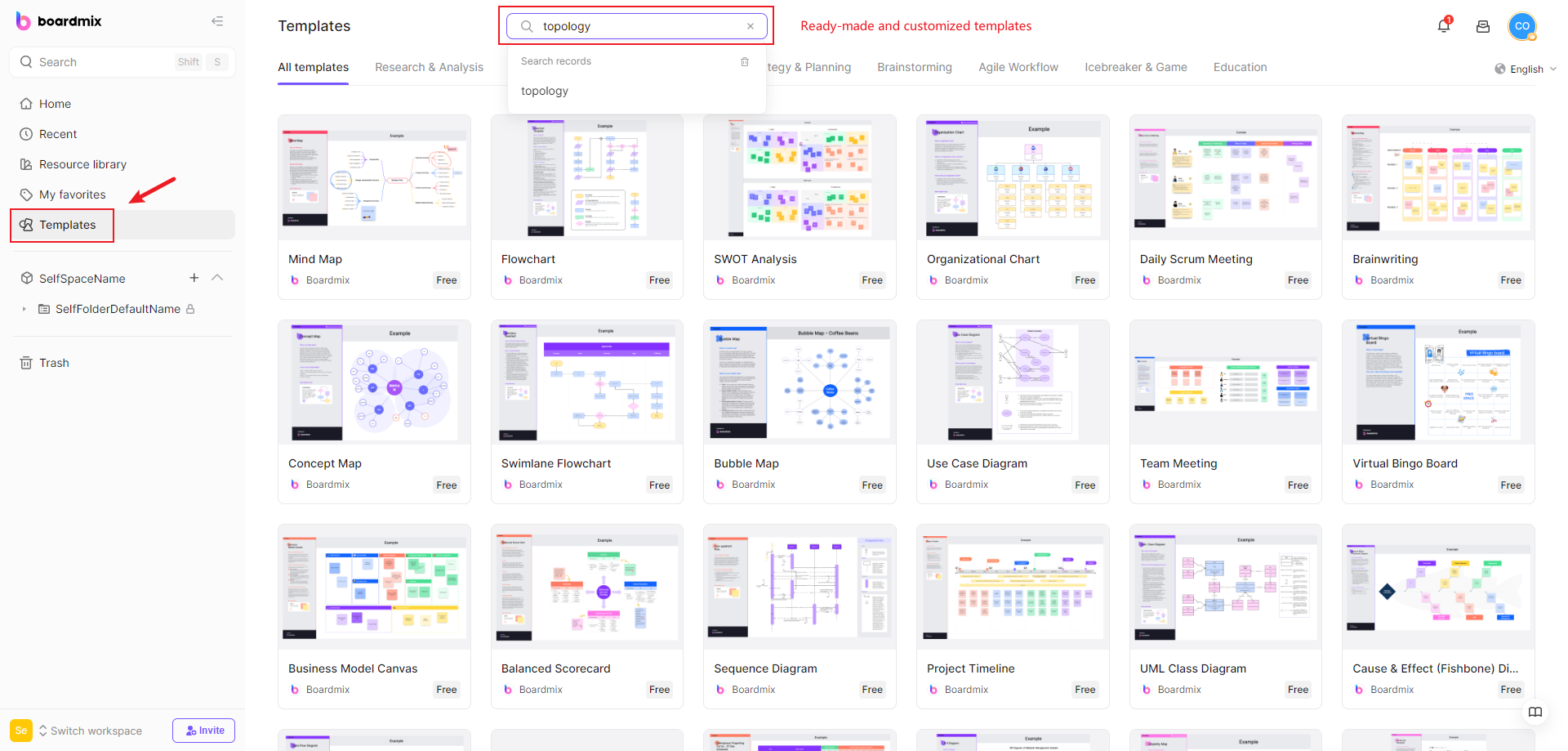
4. Drag and drop devices and connections from the library onto the canvas. You can add routers, switches, hubs, and other network devices to represent the hierarchy of your network.
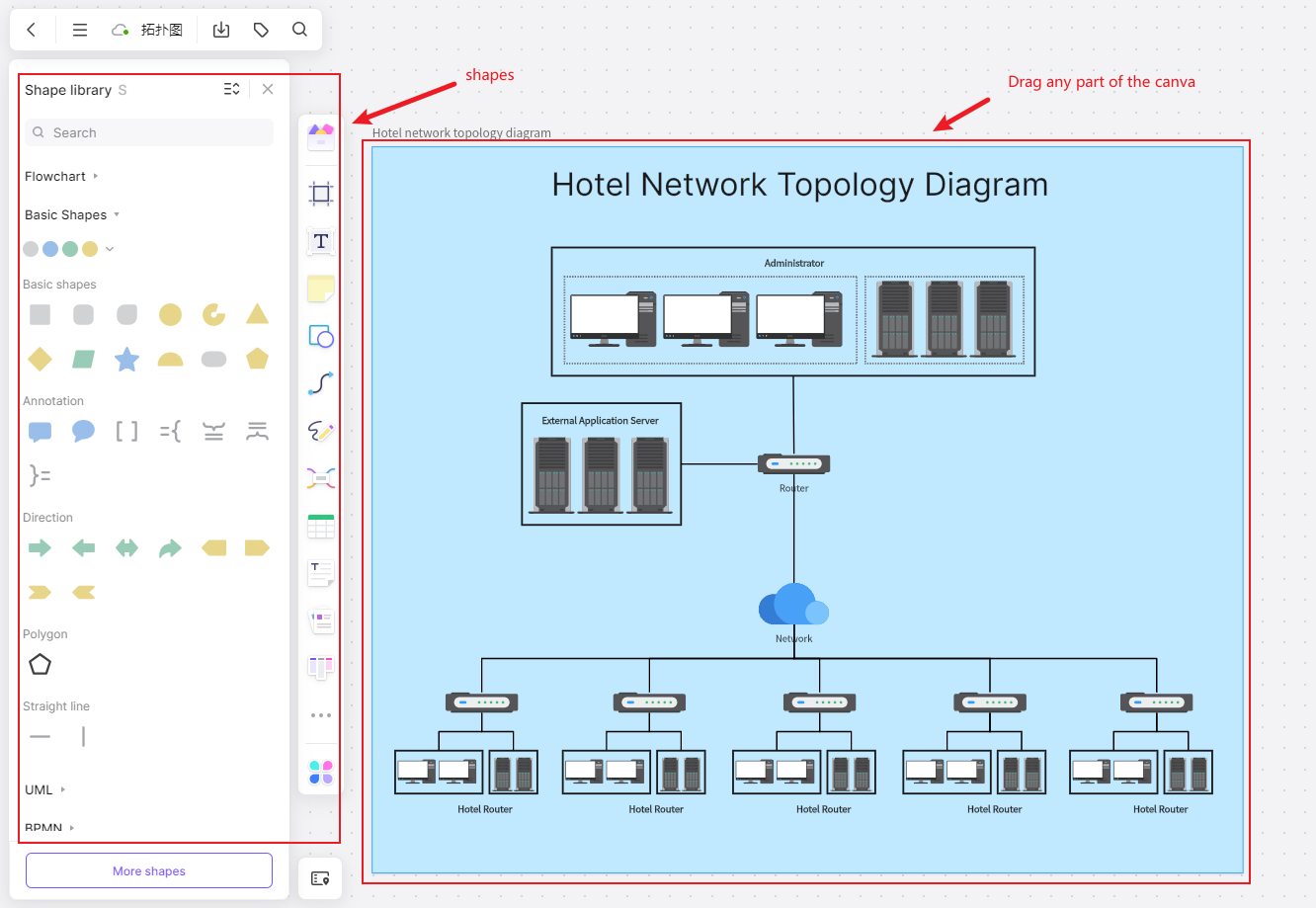
5. Use the alignment and arrangement tools to organize the devices in a tree-like structure. You can adjust the position, size, and spacing of each device to create a visually appealing network diagram.
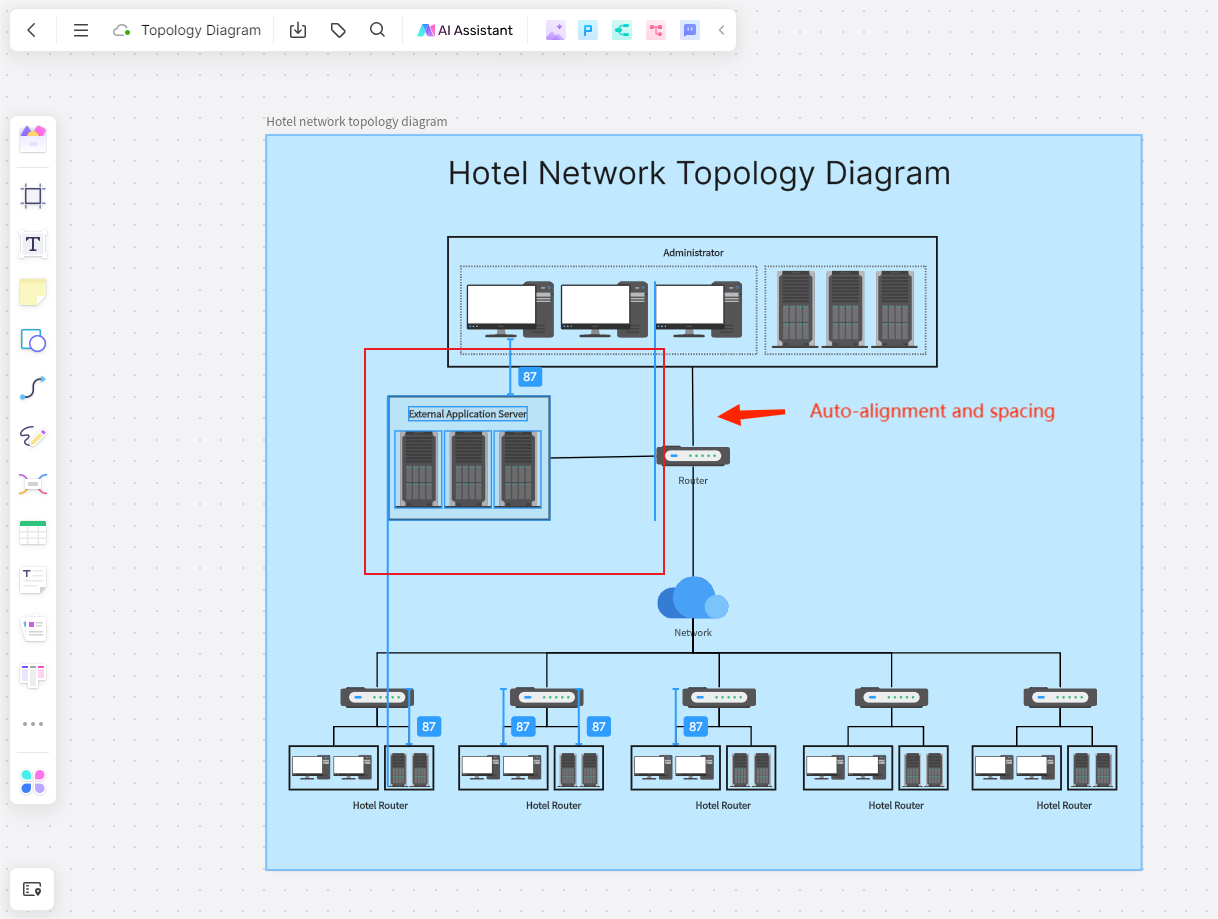
6. Customize the appearance of devices and connections by changing their colors, shapes, and labels. This helps to differentiate between different types of devices and connections in your diagram.
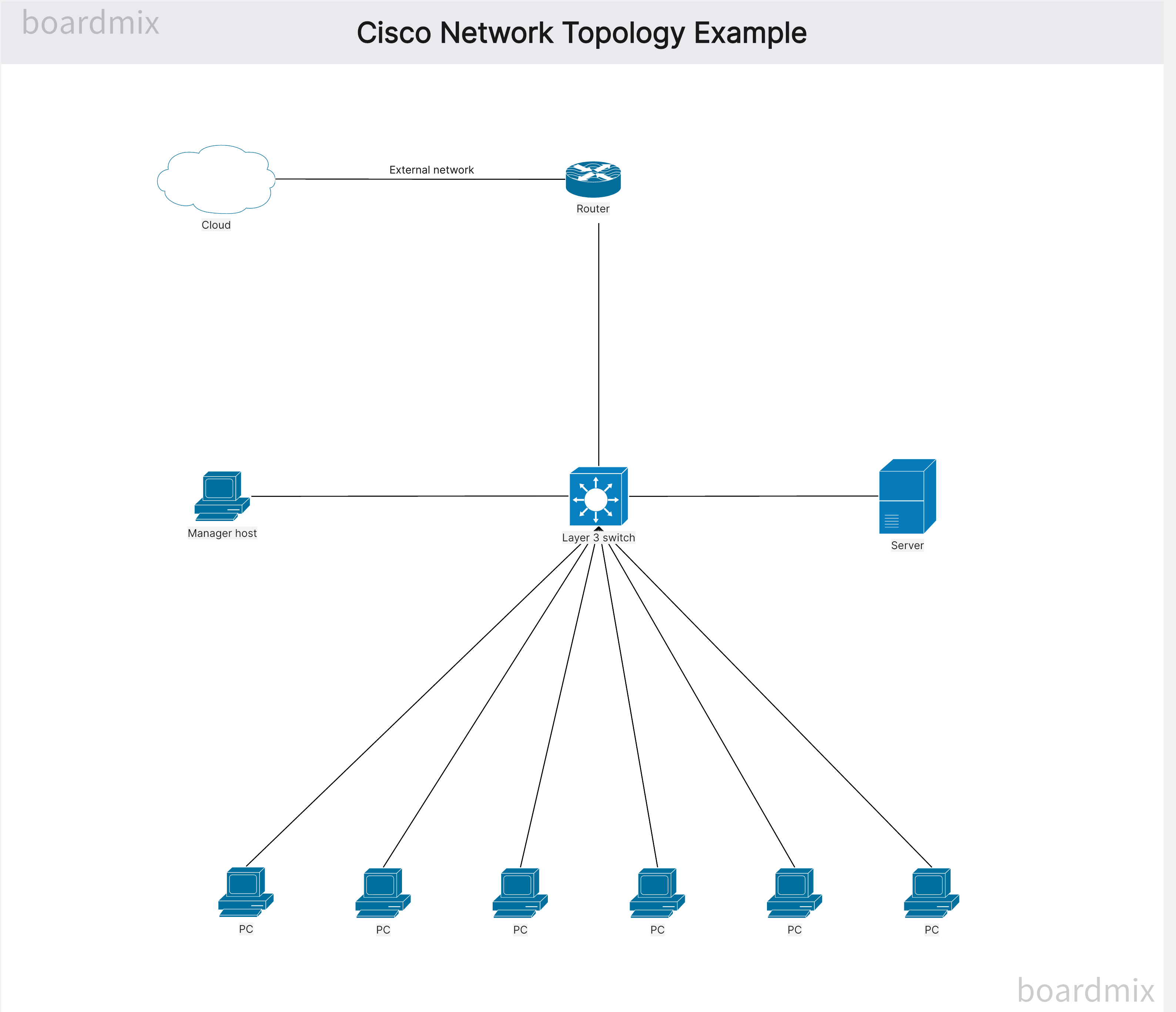
7. Add labels and captions to provide additional information or explanations for each device or connection in your diagram. This makes it easier for others to understand the structure and functionality of your network.
8. Use the zoom and pan tools to navigate and view your network diagram at different levels of detail. This allows you to focus on specific areas or zoom out to see the entire diagram.
9. Save your diagram regularly to ensure that your progress is not lost. Boardmix automatically saves your work as you go, but it's always a good idea to save manually before closing the application.
10. Share your diagram with colleagues or clients by exporting it as an image or PDF file. You can also collaborate in real-time by inviting others to view or edit your network diagram directly within Boardmix.

That's it! By following these steps, you can easily create tree topology diagrams using Boardmix. Enjoy the user-friendly interface, customization options, and collaboration features to effectively visualize and manage your network.
What is the Tree Topology Diagram Used for?
The tree network topology diagram is used to represent the structure and connectivity of a network that follows a hierarchical tree-like structure. It is commonly used in local area networks (LANs) and wide area networks (WANs) to illustrate how devices are connected and how data flows within the network. Here are some specific uses of the tree topology diagram:
- Network Planning and Design: The diagram is used during the planning and design phase of a network to determine the best placement of devices and optimize network performance. It helps network administrators and engineers visualize the network's layout and make informed decisions about the network architecture.
- Troubleshooting: The diagram is useful for troubleshooting network issues by providing a clear overview of the network's structure. It allows administrators to quickly identify potential problem areas and isolate issues, improving the efficiency of problem-solving.
- Documentation: The diagram serves as documentation for the network, providing a visual reference for future use. It helps network administrators and technicians understand the network's configuration and facilitates maintenance and updates.
- Communication: The diagram facilitates effective communication among team members, stakeholders, and clients. It provides a common language for discussing network architecture, potential changes, or improvements. It helps ensure that everyone has a clear understanding of the network's structure and connectivity.
- Scalability and Expansion: The diagram helps in planning for network scalability and expansion. It provides insights into the network's capacity and helps administrators identify areas where additional devices or connections may be needed.
The tree topology diagram is used for network planning, troubleshooting, documentation, communication, and scalability. Its visual representation enhances understanding and management of the network effectively.
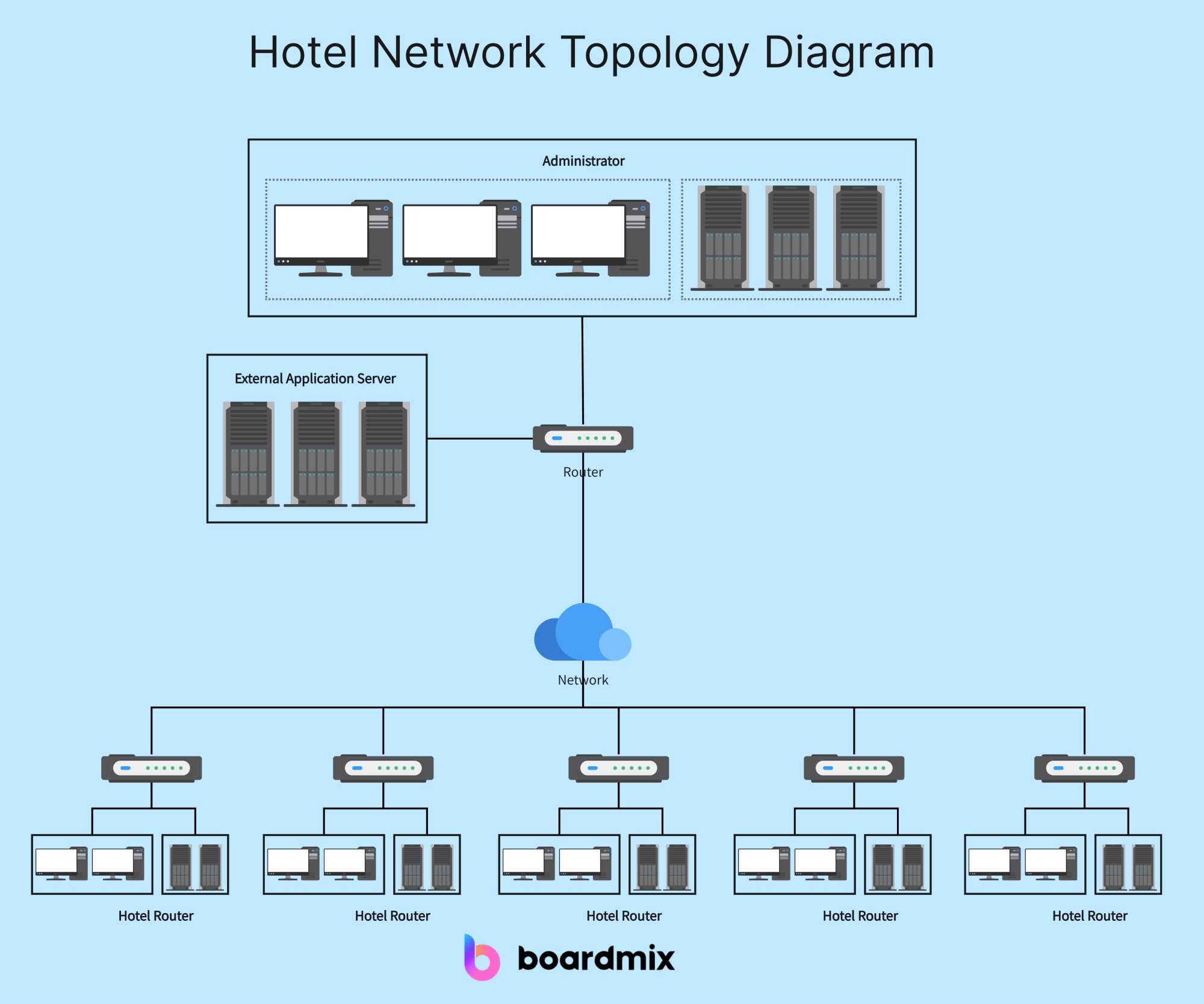
Why the Tree Topology Diagram is Important?
The tree topology diagram is an essential tool in network architecture because it provides a clear visual representation of the network's structure and connectivity. It helps network administrators and engineers understand how devices are connected and how data flows within the network.
- Troubleshooting: The diagram allows for easy troubleshooting of network issues by providing a clear overview of the network's layout. It helps administrators quickly identify potential problem areas and isolate issues.
- Planning and Design: The diagram is crucial during the planning and design phase of a network. It helps determine the best placement of devices, optimize network performance, and ensure scalability.
- Documentation: The diagram serves as documentation for the network, providing a visual reference for future use. It makes it easier for new administrators or technicians to understand the network's configuration.
- Communication: The diagram facilitates effective communication among team members, stakeholders, and clients. It allows everyone to have a common understanding of the network's structure and facilitates discussions about potential changes or improvements.
- Security: The diagram helps identify potential security vulnerabilities by providing an overview of the network's connections. It allows administrators to strategically implement security measures and protect critical resources.
The tree topology diagram is important because it aids in troubleshooting, planning, documentation, communication, and security of a network. Its visual representation enhances understanding and management of the network effectively.
Conclusion
Tree Topology Diagrams find applications in various contexts, serving as essential tools for network planning, design, and communication. The hierarchical structure of tree topologies enables efficient data transmission and simplifies troubleshooting, making these diagrams invaluable in networking scenarios.
Boardmix offers an exceptional platform for crafting Tree Topology Diagrams effortlessly. It stands out as the ideal tool for this task, providing a user-friendly interface and collaborative features that simplify the creation process. Take action today and leverage Boardmix to create Tree Topology Diagrams online for free. Transform your network planning and communication with this user-friendly and collaborative tool—where simplicity meets sophistication seamlessly.











